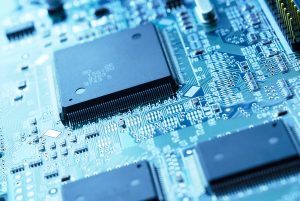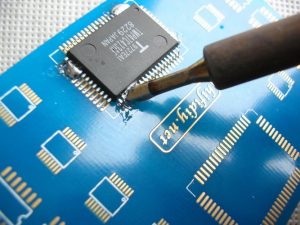What are they made of?
ICs are crafted from silicon, a semiconductor material. Tiny electronic components like transistors are etched onto the silicon surface and interconnected with a network of wires.

How are they made?
The process of creating an IC is complex and precise. Here’s a simplified breakdown:
- Start with a silicon wafer: Imagine a thin slice of silicon, like a giant cracker. This wafer is the foundation for many ICs.
- Photolithography: This technique uses light to “print” circuit patterns onto the wafer surface. Think of it like a miniature photocopier for circuits!
- Etching: Unwanted material is removed from the wafer, leaving behind the designed circuit patterns.
- Doping: Different areas of the silicon are treated to create p-type and n-type regions, which are essential for transistor function.
- Metal Deposition: A thin layer of metal is deposited to form the wires that connect all the components.
- Testing and Packaging: Once the circuits are complete, the chips are rigorously tested and packaged in protective enclosures for use in electronic devices.
The Benefits of ICs:
- Miniaturization: ICs allow for incredibly small and compact electronic devices.
- Performance: They offer high speed, reliability, and low power consumption.
- Efficiency: Mass production using photolithography makes them affordable.

The Evolution of ICs:
The capabilities of ICs have grown exponentially since their invention in the 1950s. Early ICs contained just a handful of transistors, while modern chips boast billions of components. This miniaturization trend, known as Moore’s Law, has driven the incredible advancements in electronics we see today.
Types of ICs:
There are many different types of ICs, each suited for specific purposes:
- Digital ICs: Process information in the form of 0s and 1s. Used in computers and microprocessors.
- Analog ICs: Deal with continuous signals, like sound or light. Found in radios and audio equipment.
- Mixed-signal ICs: Combine both digital and analog circuits for applications like mobile phones.
- Memory ICs: Store data, like RAM and ROM chips.
- ASICs (Application-Specific Integrated Circuits): Custom-designed for a particular task.

The Future of ICs:
Engineers are constantly pushing the boundaries of IC design. New technologies like 2.5D and 3D ICs promise even smaller, more powerful chips with improved heat dissipation.
In conclusion, integrated circuits are the tiny powerhouses driving the modern world of electronics. Their complex design and efficient manufacturing process have revolutionized technology, and their future holds even more exciting possibilities.
